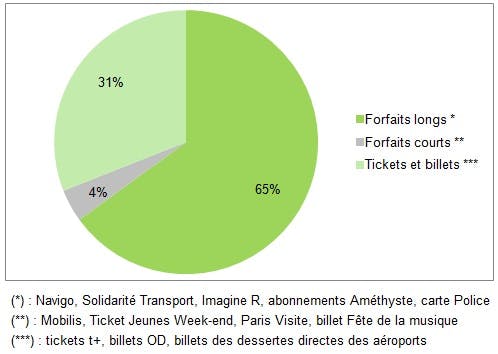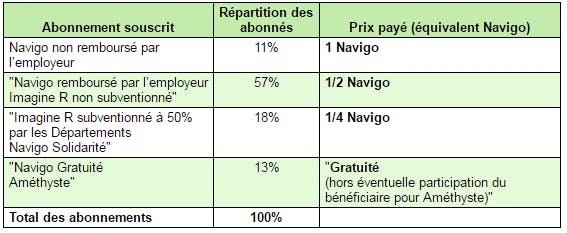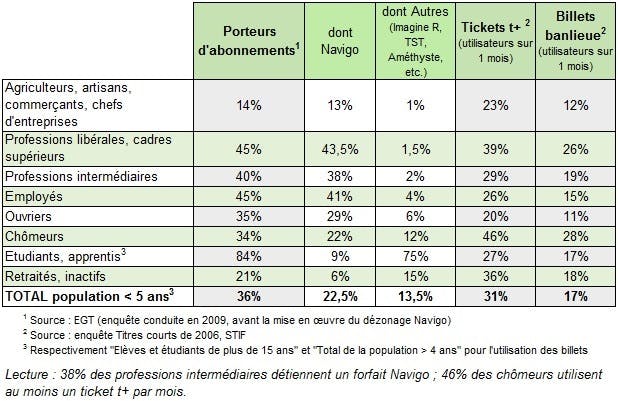Employed workers have a higher propensity than inactive people and jobseekers to use a flat rate, due to more regular mobility and the attractiveness that employer reimbursement gives to the subscription.
On the other hand, jobseekers who do not meet the income conditions to benefit from the Solidarity Transport Pricing (TST) travel mainly with single tickets, and more particularly t+ tickets: their more reduced mobility does not justify the purchase of a full-fare Navigo. In return, travelling on a single ticket probably leads them to restrict their number of journeys to the strict minimum, unlike season ticket holders who can travel unlimited and take advantage of the dezoning.
Within the working population, there are significant differences between, on the one hand, managers, intermediate professions and employees, who are heavily in possession of flat-rate schemes, and, on the other, blue-collar workers, farmers, craftsmen, shopkeepers and business leaders: their lower use of flat-rate is explained for some by their low mobility (farmers, shopkeepers), for others probably by the geography of their travel (fragmented movements of workers or even the need to transport work tools, poorer public transport service to industrial sites that tend to be deconcentrated and staggered working hours for workers, etc.).
Ile-de-France pricing thus favours season ticket holders more than occasional travellers, particularly for long-distance commuting, as shown by this comparison between ticket and package pricing before the implementation of the all-zone package.


